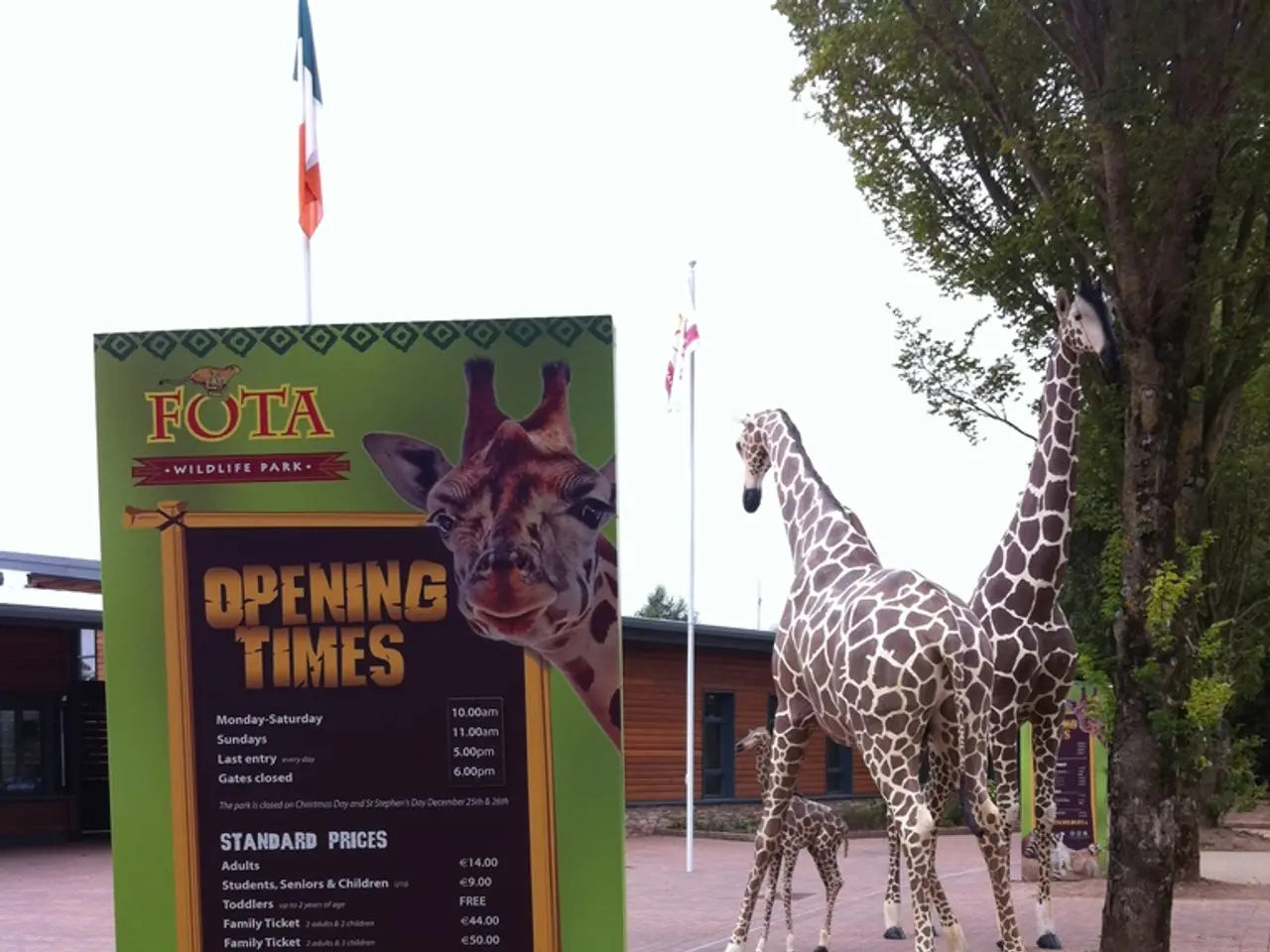Technology's Role in Enhancing Wildlife Preservation: An Examination
In the realm of wildlife conservation, technology is proving to be a game-changer. From drones to artificial intelligence (AI), these modern tools are bridging the gap between wildlife needs and human impact, revolutionising how we approach and protect our planet's diverse species.
Drones, equipped with high-resolution cameras, are transforming the way conservationists monitor animals in their natural habitats. Their remote and hazardous access capabilities allow for the survey of inaccessible or dangerous territories, while their aerial surveillance provides real-time imagery that helps track animal movements, identify species, and monitor habitat conditions.
Camera traps, another essential tool, offer non-invasive monitoring, capturing images and videos of wildlife with minimal human interference. These devices are crucial for estimating population sizes, documenting species presence, and monitoring behaviour, such as tracking tiger populations in India.
Artificial intelligence (AI) is automating the processing and analysis of large datasets from camera traps, drones, and acoustic sensors. AI can classify animals by their appearance in images or by their vocalizations, significantly speeding up species identification and tracking. Moreover, AI models detect behavioural patterns, migration routes, and habitat preferences, aiding in the formulation of targeted conservation strategies.
Remote sensing and satellite technology provide a macro view of ecosystems, tracking habitat changes, deforestation, and land use over time. High-resolution satellite imagery helps detect early warning signs of ecosystem stress, such as temperature anomalies or vegetation loss. AI-driven analysis of satellite data enables rapid interpretation of environmental changes and supports decision-making for habitat preservation and restoration.
Integrated technology is already making a significant impact in the real world. For instance, underwater microphones (hydrophones) use AI to recognise whale calls, alerting ships to avoid collisions. Virtual fencing, using GPS-enabled collars, keeps animals within safe zones, supporting livestock and wildlife management with minimal physical barriers.
The benefits of this technological revolution are numerous. Technology reduces the time and labour required for data collection and analysis, allowing conservationists to focus on intervention and management. Automated systems improve the accuracy of population estimates and habitat assessments, supporting more effective conservation planning. These tools can be applied across diverse ecosystems, making them adaptable to a wide range of conservation challenges.
Emerging technologies like blockchain and more advanced sensor networks promise to further enhance transparency, accountability, and integrated monitoring in conservation efforts. In the future, technology may provide even more powerful tools for wildlife conservation, ensuring the protection of our planet's biodiversity for generations to come.
- Data-and-cloud-computing platforms are essential for storing and analyzing the vast amounts of information collected by drones, camera traps, and acoustic sensors, allowing environmental scientists to make informed decisions based on real-time data.
- Environmental-science research is being revolutionized by artificial-intelligence (AI), as AI models are used to analyze patterns in data from various sources, such as satellite images and wildlife sound recordings, leading to a better understanding of animal behavior, ecological systems, and the impact of climate-change on these systems.
- Lifestyle changes can play a significant role in mitigating climate-change, and technology can help by offering educational resources and tools that empower individuals to make informed decisions about their carbon footprint. For example, apps and websites can provide personalized recommendations for reducing energy consumption and increasing use of renewable resources.




